| Godfrey Ellard Hemsworth | ||||||||||
|
|
|
|||||||||
|
Seen here on the left, in 1940 Godfrey's signature: Godfrey (‘Goff’) Hemsworth and ‘battling’ Ray Parer piloted a second-hand Fairey Fox biplane, G-ACXO, in the 1934 England to Australia Air Race. Although they almost immediately had engine trouble (over the English Channel, in fact) and didn’t complete the course in the time allowed to qualify for any of the prizes, they battled on... and on; eventually, they took 117 days to get to Melbourne. But they got there!
After the race, Godfrey joined the RAAF and was killed in the Battle of the Coral Sea, flying a Catalina. "'Goff' had all the guts in the world." They say. [family insights were kindly provided by G E Hemsworth, Godfrey's nephew].
Family Godfrey was born in Sydney, Australia on the 2nd of January, 1910. He had three brothers - John, Neville and Hugh - and two sisters, Alice and Anne. His grandfather (John) had owned and captained a number of vessels (including the Neville & Costa Rica Packet), but during the 1890’s depression most of the fortune had been lost. His father, Captain Hemsworth – also (confusingly for us) called Godfrey Ellard – had been instrumental in the exploration of New Guinea during the latter part of the previous century; in 1885, the Maitland Mercury & Hunter River General Advertiser reported that: “Godfrey Hemsworth, age 23, of Brisbane, filled the post of nautical sub-leader, and in the event of the death, or serious illness, of the leader he would take his position, except that he would not lead the party on land. He held a master's Certificate, and had been navigating officer of some of the finest steamers, was a member of the Meteorological Society of London, and was qualified to undertake any kind of marine surveying.” Theodore F Bevan, of the RGSA, wrote about that expedition and the subsequent gold rush in his book ‘Toil, travel and discovery in British New Guinea’. However, by 1906 Captain Hemsworth was listed as a 'pearler' in the electoral roll for Broome, Coolgardie, living in Weld Street. (A ‘pearler’ (leaving aside its use as an Australian slang word meaning ‘excellent’ or ‘good-looking’!) is someone that ‘dives for, or trades in, pearls’). There was obviously enough money for him to purchase some pearling luggers (in the end he owned 12 including the Blanche –named after his niece - and some others named after his sisters). He left Broome in 1908 and returned to Sydney. It was while he was in Western Australia that he met Mabel; they married in Feb 1907. She was 'about 30 years younger than her husband' (who would have been about 45 at the time!) Godfrey's nephew G E Hemsworth told me "Interestingly, I have a journal that a great aunt wrote about her life and that of her parents and siblings. It traces their lives from 1825 to the 1930’s, but not once does she mention Mabel, so obviously the family were not happy!" Captain Hemsworth died in 1923. His estate amounted to about £12,000, which he left ‘for the benefit of his widow and six children’. Using average earnings, this would be worth over £2 million today. Before the Race Godfrey took his A and B pilots’ licences with the local branch of the Australian Aero Club in 1931, and then flew for Parer's New Guinea company. Not without incident, however: “Mr- Mario Coucoulis, secretary to the Greek Consul-General in Sydney, left Mascot aerodrome on Saturday on a flight to Perth. His idea is to gain experience for a projected flight to Greece later in the year. Mr. Coucoulis and Pilot G. E. Hemsworth, who were flying from Sydney to Perth, made a forced landing near Wagga on Monday. The plane was damaged, but neither occupant was hurt. They intend to proceed when repairs are effected.” The Queenslander, Thursday 23 July 1931 During the 1930s,when Papua New Guinea was governed by Australia, a quite extraordinary air-based operation was mounted in Bulolo to support the gold mining industry– so much so that New Guinea ‘led the world in commercial aviation’ at the time.
Bulolo during the gold rush days In 1933 Godfrey and his brother John were living at Wychwood, Condamin Street, Balgowlah, New South Wales (although both were listed as having ‘No Occupation’). Their mother, Mabel, lived nearby in White Street. Parer and Hemsworth arrived in England from New Guinea on August 6, 1934, breaking the journey at Singapore. The Fairey Fox in which they competed in the Air Race was bought from the Hon. Mrs. Victor Bruce, and was modified at Hanworth by W. S. Shackleton, who ‘cleaned it up very prettily’. After the Race In September 1936, there is a curious entry in the Sydney Morning Herald: “AMBITION TO FLY: Youth Granted Fees from Estate Application was made in Equity yesterday by Neville Hemsworth, a son of the late Captain Godfrey Hemsworth, retired master mariner, formerly of Campbelltown, for an order for the payment of fees from his father's estate for the purpose of applicant's training as an aviator. The application was made through the applicant's mother, the testator's widow, a resident of Manly. She said that her son Neville had just left school. He was aged 19, and wished to qualify as an aviator to obtain a pilot's "A" licence, and "B" commercial licence, and wireless and navigation licences. One of his brothers, Godfrey, was a pilot for New Guinea Airways at a salary of £900 a year. Mr. Justice Nicholas made an order authorising the trustee to pay out of corpus £475 to meet the fees necessary for the purpose indicated, and in addition, £25 for books, instruments, etc.” "... It’s an interesting story. My grandfather’s will gave the boys their money at 25, the girls were to receive a monthly payment. As Neville wanted to learn to fly he had to have access to the funds earlier and Mabel successfully argued that sufficient funds should be released to enable Neville to obtain his pilots license. When Godfrey died in 1923, the oldest child (John) was 15 and the youngest Hugh only a few months old. Mabel had many fine qualities and was certainly a loving mother however she was not good with money and of course six years later in 1929 the start of another depression and a second fortune lost. This indicates how important it was for Neville to obtain a good job and learning to fly would help achieve that." …although Godfrey's working for ‘New Guinea Airways’ may not have been as glamorous as it sounds…
RAAF Godfrey was a First Officer with Qantas from May 1938 until the outbreak of war fifteen months later. On his application form for the RAAF, he listed his ‘service aircraft’ experience as ‘Seagull Mk 1, Empire Boats, and Catalina’. By then, he had 5,500 hours experience – 4,500 as pilot in charge. The Australian government requisitioned two `C` class flying boats and their crews from Qantas, and two Seagull Mk5 amphibians, to form 11 Squadron RAAF. The boats were converted for war use in 5 days and on 25 September left for active service operations in the north of Australia; Godfrey, who had been accepted as a Pilot Officer a month before, was one of the pilots. During the next couple of years, he was promoted to Flying Officer, then Flight Lieutenant and finally Squadron Leader in 20 Squadron, based at Port Moresby, in April 1942. His RAAF report, written in 1941, describes him as ‘of temperate habits’ and praised his ‘zeal and energy in performance of duties’, but he only scored average marks for his ‘personality, force of character and leadership’. G.W Pearce, the examiner, concluded he was: “A keen and efficient officer. A good pilot and carries out his flying operations in a competent manner. Lacks the right service outlook. Is inclined to be argumentative with his seniors and has the ‘Qantas’ outlook in that he will not take the slightest risk in flying in case it will jeopardize his position with Qantas Airways after the war. He, however, commands the respect of his crew, and he is well liked by the officers”. 20 Squadron RAAF had an extraordinary history, which is perhaps best appreciated by reading this article reproduced in several newspapers of the time. It was written in April 1943, a year after Godfrey was killed: "But I think those RAAF Catalina squadrons have done a greater job in this war than anyone else". This tribute from a fighter pilot of famous Squadron 75 is probably the best way in which to begin this story. Before Squadron 75 fought off Japanese bombers and Zeros over Moresby, and attacked them at Lae in March and April last year, the Catalina boys had bombed them hard at Rabaul. Catalinas were few in number then, but they struck so daringly that the Japs must have believed our Moresby strength was greater and more varied than it was. At any rate, they paused in their southward rush and whenever they came over Moresby in those January days, they flew high and cautiously. Today Australia's Catalina flying boat squadrons have won world-wide fame. In craft built specially for reconnaissance they have become a formidable striking unit. They have harassed the Jap from Truk to Tulagi. They have flown more than 2,000,000 miles in all weather over the Coral Sea and the Pacific to blow up in the dead of night his ammunition dumps and stores, destroy his grounded aircraft, tear gaping holes in his airstrips, sink his ships, plot his movements. One lone Catalina actually tried to stop the Japanese task squadron in its descent upon Rabaul. Flt-Lt "Bob" Thompson, on patrol on January 21, spotted the convoy. He signaled that he would attack if it didn't hold back. The Japs continued full steam ahead. Thompson attacked. The Japs shot him down. The crew are believed prisoners in Japan. That was the Catalinas' first loss in battle. Thompson's impudent daring is the key to the cool courage that has characterized the work of the squadrons ever since. Sometimes they have made newspaper headlines. But mostly they have plodded ahead quietly and doggedly. Theirs is not the swift dramatic flash of the fighter plane, told in short dynamic sentences. Theirs is the hard 18 to 22-hour mission to pin-pointed targets, their reward high flames, explosions, and billowing smoke. But you can get drama only secondhand from the Catalina boys. They will tell you stories about others, never about themselves. When I was there, the Cats had just returned from their big "bash" at Ballale in the Solomons Buin-Faisi area. As at other places, they had destroyed ammunition and fuel dumps, stores, and grounded planes, and young Sq-Ldr Stokes was credited with "the biggest fire since Makambo." Today in the mess they sing to the tune of 'The Man on the Flying Trapeze": 'They head her for home and the skipper retires To dream of the headlines next day the "the fires Were visible 90 miles distant" - the liars. The Cat boats are flying tonight.' That's the other side of the Catalina boys. Light hearted over their parodies in the mess - deadly serious in their job. Pioneer Pilots Beginnings of the Catalina squadrons go back to Empire Fying boat days. With German raiders in the Pacific, reconnaissance on a much wider scale was essential. While orders for Catalinas were placed in America, Qantas flying boats were taken over by the Commonwealth. The names of Sims, Gurney, Purton, and Hemsworth, all Qantas pilots, began to dot the islands of New Guinea and the Solomons. They plotted fuel 'hide-outs" and secret operational bases. Sims is back with Qantas now. Gurney was killed in an American bomber returning from Rabaul (a New Guinea airstrip bears his name); Purton is missing from early Japanese operations in the north-west; Hemsworth was shot down in the Coral Sea battle. Al Norman, second-pilot with Gurney on the first Catalinas, also went in the Coral Sea. Godfrey Hemsworth's is one of the first names you hear when you visit the Catalinas. It is an indication of a good pilot and a strong character. He could have come home another way from his shadowing of the Japanese Coral Sea invasion fleet, instead, he chose to make an even more thorough job of his search. Enemy floatplanes got him. They tell this story of Hemsworth in the mess: "He was on a night raid to Rabaul. That was early in the 'piece.' Second 'dick' was Bill Miller, DFM. They were attacked by five Zeros just as they were making their run. Their port engine was disabled and the old crate was holed in 157 places, including the petrol tank. One Zero was shot down. "It was a tough spot, but with guns blazing, 'Goff' got away on one engine. They were forced down at Salamaua to get petrol. 'Goff' got her off again, still on one motor, and reached Moresby all out. Flying time home was 15 hours." " 'Goff' had all the 'guts' in the world." they say. POSTSCRIPT In theCoral Sea and Catalina Memorial Museum, Bowen, Queensland, Australia, there is a diorama showing two PBY-5 Catalinas: A24-18, which was shot down on 4th May 1942, with a loss of nine aircrew, was piloted by Godfrey Hemsworth, whose brother Neville, also a WW2 RAAF veteran, dedicated the Museum on 8th May, 1992. The other aircraft is A24-20 shot down on 6th May. Both these aircraft were shadowing the approaching Japanese Fleet. A24-18 is credited with first locating the Fleet, and was subsequently ordered to identify and report back the size and content of the fleet. The plane did so and was not heard from again. As to what happened then, 'there is no certain answer. We [the family] know he was shot down and that he and his crew were picked up; after that it becomes conjecture but there seem to be three theories: Hugh told me that Godfrey was killed on board the ship which picked him up but there is no actual proof, no records as to what actually happened.' His mother Mabel received his Air Force Cross from His Excellency the Governor-General, Lord Gowrie, at Admiralty House on the 25th of January 1943. She herself died later the same year, from leukemia, in Manly. Godfrey's nephew G E Hemsworth told me that "Anne's husband Andrew was a prisoner of the Japanese, he was taken at Singapore. Godfrey's brothers all served in the RAAF: John was too old to fly, but served in the Middle East for three and half years in ciphers and equipment, moving along the coast and setting up airfields and ensuring the plans and men had the equipment with which to fight. He used to take lots of photo’s including German POW’s and Montgomery standing in a jeep etc. Hugh, the youngest, was a pathfinder and flew many missions over Germany. He won a DFC & Bar."
There is a memorial to Godfrey in the Port Moresby War Cemetery, Papua New Guinea (Memorial No 23791928).
No. 20 Squadron was established at Port Moresby on 1 August 1941 for a general reconnaissance role. The Squadron conducted long range patrols in conjunction with No. 11 Squadron until the outbreak of war in the Pacific. It then commenced anti-submarine patrols and bombing raids against Japanese bases. As the Japanese advanced into the South West Pacific the Squadron was also responsible for evacuating white civilians from areas threatened by invasion. While the Squadron moved to Bowen, Queensland in May 1942 in response to the increasing frequency of Japanese raids on Port Moresby it continued to conduct reconnaissance, anti-submarine and occasional bombing operations over the waters around New Guinea. http://en.wikipedia.org/wiki/No._20_Squadron_RAAF The serial numbers may be wrong:
Godfrey was posted to No 11 Squadron 25/9/39 then to 20 Squadron 1/8/41 |
||||||||||

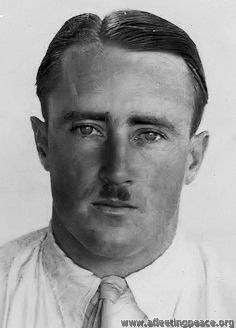
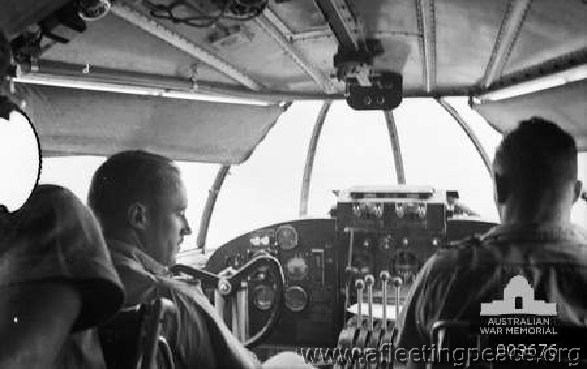

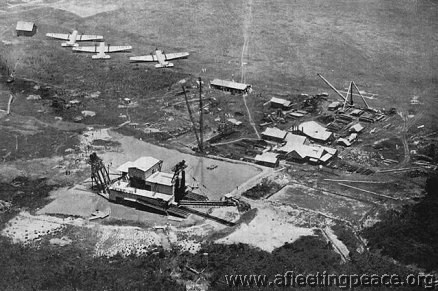
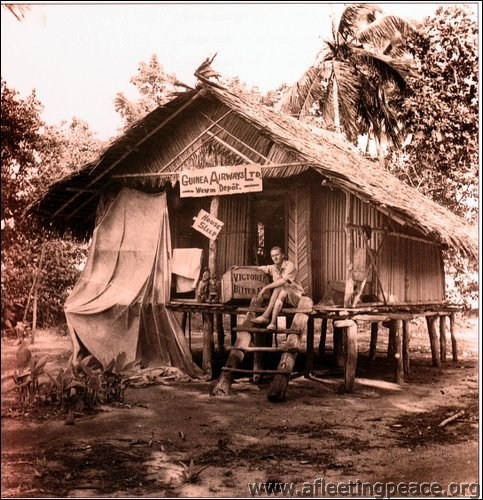
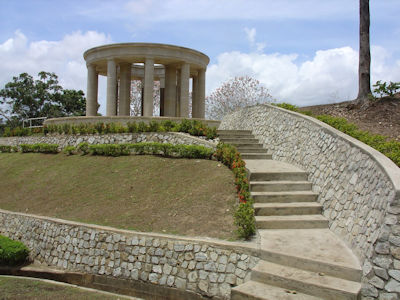 CWGC
CWGC